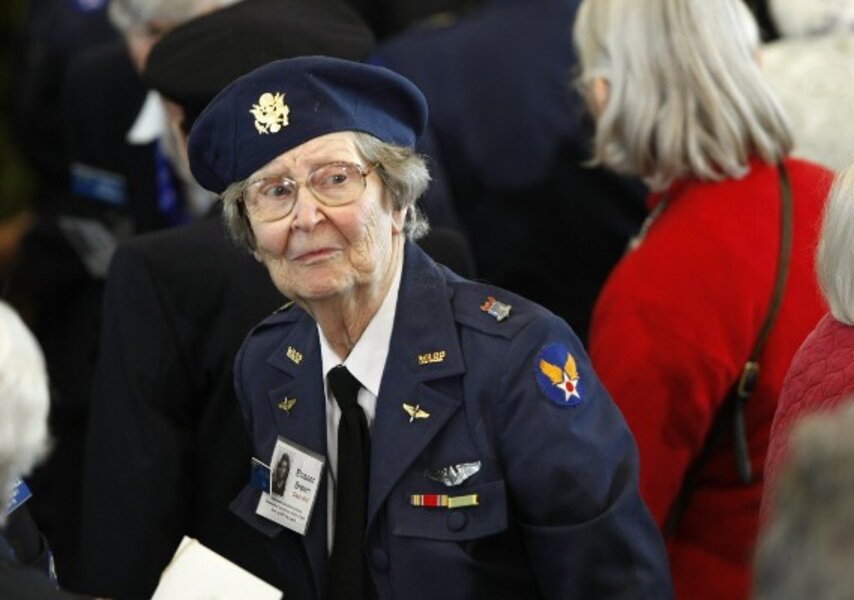Arlington Cemetery inurnment opens to WWII women pilots
Loading...
A decades-long fight for equal benefits and recognition of WWII women pilots has culminated in President Barack Obama signing a bill into law Friday that allows the ashes of these pilots who flew in the short-lived Women Airforce Service Pilots (WASP) program to be laid to rest at the Arlington National Cemetery.
The law comes a year after the granddaughter of one of the nearly 1,100 women pilots who served in the 2-year program launched an online petition to overturn a 2015 US Army decision deeming these women ineligible for Arlington inurnment or burial honors.
Thirty-eight WASP pilots died in service; more than 100 are alive today.
“This campaign shows how important it is to remember the history of those who came before us and to ensure the next generation learns that history too. And to fight when the rights of those people are taken away,” wrote Erin Miller, one of the granddaughters of Elaine Danforth Harmon, a WASP veteran who died last April, on a petition update Saturday announcing the new law.
Ms. Harmon was set on serving in the WASP program, having scrounged to raise the money to use a friend’s plane to build up the 75 hours of flight training that were required of women, but not of men, as The Christian Science Monitor has reported.
She joined the program in 1944 after graduating college. Harmon and the other women pilots flew US Army Air Force planes for non-combat missions during the war to free up male pilots for combat. Between 1942 and 1944, as CNN reports, they flew more than 60 million miles in bombers, transporting aircraft from factories to air bases, towing aerial targets for the infantry, flying tracking missions, and instructing trainees.
By 1977, lobbying efforts by the women pilots and their supporters had secured them veteran status, and by 2002 they won the right to be inurned at Arlington.
But in 2015, then-Army secretary John McHugh revoked that right after lawyers determined that WASP program veterans did not meet the Army’s strict eligibility rules for inurnment at the Arlington cemetery, which the Army oversees.
Although the service of these women was highly commendable and deserved recognition, said the cemetery said in a statement earlier this year, it did not "reach the level of Active Duty service required" to be inurned at Arlington, where there is limited space.
The decision meant that these pilots’ ashes could no longer be placed in an above-ground structure at the cemetery. This was a major blow to the family of Harmon, whose last wish before she died last year was to be inurned at Arlington.
“The WASP answered their country’s call at a time of dire need,” wrote another of Harmon’s granddaughters, Tiffany Miller, in a Change.org petition she launched six months ago to help overturn the Army's decision. “The service and hard work of my grandmother and other WASP should afford them the right to be buried alongside other veterans,” she wrote.
Sen. Barbara Mikulski (D-Md.) also worked to overturn this decision. She introduced legislation early this year that sought to give WWII women pilots the option of being inurned at Arlington. The legislation passed both the US House and US Senate unanimously, as the Monitor has reported.
"Today we have righted a terrible wrong so Women Airforce Service Pilots can once and for all be laid to rest alongside our nation's patriots at Arlington National Cemetery," Sen. Mikulski said in a statement Friday. "If they were good enough to fly for our country, risk their lives and earn the Congressional Gold Medal, they should be good enough for Arlington."








